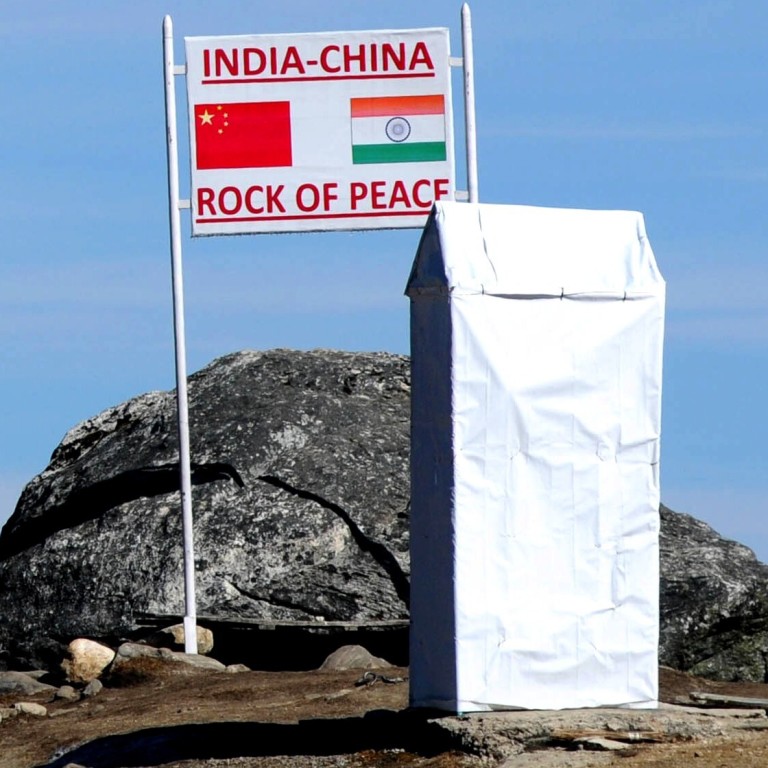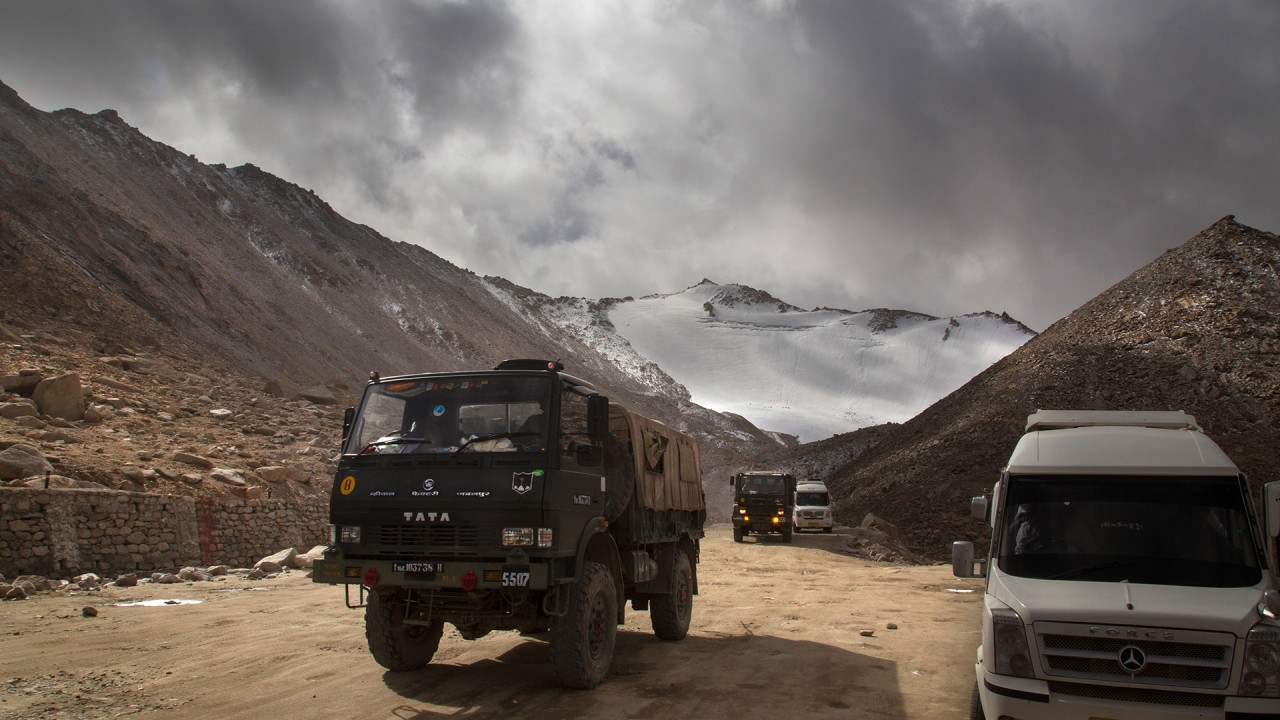
China-India border fight latest in long and troubled history between the Asian giants
- With both sides accusing the other of ignoring agreements struck over past 30 years, experts say situation is complex
- One problem is lack of demarcated border, just a traditional line formed gradually over thousands of years
Chinese foreign ministry spokesman Zhao Lijian levelled a string of accusations against New Delhi last week, including an assertion that “the adventurous acts of the Indian army seriously violated the agreements reached between the two countries on the border issue”.
A day later, his Indian counterpart Anurag Srivastava hit back, accusing China of violating various bilateral agreements – in particular a landmark 1993 treaty – by amassing large numbers of troops along the disputed Himalayan border since early May. The issue, he claimed, was “at the heart” of the latest row.

02:13
Three Indian soldiers killed in border clash with Chinese troops
Since 1993, China and India have signed at least five treaties over their unmarked border, known as the Line of Actual Control (LAC), and a few other protocols to ensure peace and tranquillity in the border areas after decades of strenuous talks which began in 1981.
“It is a fact that there is no demarcated border historically between our two countries, other than a traditional, customary line formed gradually in the past two millennia,” said Wang Dehua, an expert on India at the Shanghai Municipal Centre for International Studies.
Wang said the border dispute – which he described as largely a legacy of British imperialism that had been unilaterally imposed on China – remained relevant to the past, present and future of bilateral ties, especially after the bloody 1962 border war. “That’s why the border issue is so sensitive and it has been extremely difficult to make headway towards agreements and possible permanent solutions that are fair, unbiased and mutually acceptable to both parties,” he said.
China-India border tensions remain even as commanders keep talking
According to Mohan Guruswamy, chairman of the New Delhi-based Centre for Policy Alternatives think tank and a senior fellow at the United Service Institution in India, the latest stand-off represented an escalation not seen since 1962. “In most sectors there is an overlap of these lines with Indian and Chinese claim lines going beyond each other’s LAC, sometimes by a few metres and sometimes by many kilometres,” he said.
In 1988 India’s then-prime minister Rajiv Gandhi embarked on a monumental visit to China, the first by an Indian leader since 1954, in an important turning point for the two countries’ political ties and their long-deadlocked border talks.
A decade of peace and tranquillity followed with the introduction of a task force on border talks – the joint working group – and probably the most productive period of border negotiations between 1988 and 2003 which produced the widely acclaimed 1993 and 1996 treaties.
A nature reserve would solve China-India border fight, says scientist
Experts generally agree the 1993 agreement – “on the maintenance of peace and tranquillity along the Line of Actual Control in the India-China border areas” – was a groundbreaking document that laid the foundation for future talks. Veteran historian on relations between the two countries Tan Chung called it the “first Magna Carta” in the development of confidence-building measures at the border.
According to the agreement, signed during then-prime minister Narasimha Rao’s visit to China in September 1993, the border question would be “resolved through peaceful and friendly consultations”. It also said that “pending an ultimate solution … the sides shall strictly respect and observe the LAC between the two sides”.
Jeff Smith, a research fellow at the Heritage Foundation’s Asian Studies Centre, said the agreement had produced tangible results and helped to further ease border tensions in the wake of the 1987 stand-off.
The 1996 agreement on confidence-building measures in the border area, like the 1993 pact, also included specific provisions that both sides should reduce or limit their respective military forces along the LAC.

03:08
India bans dozens of Chinese apps, including TikTok and WeChat, after deadly border clash
The 1996 pact specifically prohibited firearms and explosives within 2km of the LAC – which partly explains the largely hand-to-hand brawl on June 15 in which 20 Indian soldiers were killed in the first deadly border clash since 1975, along with an undisclosed number of Chinese casualties.
China-India relations suffered a series of setbacks around the turn of the century, including India’s 1998 nuclear weapons test, but another border agreement was reached with the 2005 protocol on trust building, signed during premier Wen Jiabao’s visit to New Delhi when he and Indian prime minister Manmohan Singh agreed to elevate their ties to “strategic partnership”.
Since then, according to an article by Smith for Indian think tank the Observer Research Foundation, bilateral ties have seen “a gradual slide toward more competition and rivalry as China adopted a more assertive approach to its territorial disputes” and India edged closer to the US after signing a nuclear cooperation deal in 2005.
Why are Indian and Chinese soldiers fighting with fists, sticks and rocks?
The elevation in 2003 to high-level political talks between special representatives, a modest agreement in 2012 to set up a consultation mechanism, and the 2013 border defence cooperation agreement all failed to stop rising tensions along the LAC.
According to Guruswamy, the 2013 agreement set out norms of behaviour for both sides to “minimise the inflammability due to active patrolling”, and included provisions to ban the building of permanent structures in disputed areas and avoid face-to-face confrontations.
But the provision for respecting and observing the LAC, which appeared in the previous four agreements, was conspicuously omitted in the 2013 pact, exposing the root cause of the border dispute, according to the late Chinese diplomat Mao Siwei, who was China’s consul general in Kolkata.
“The so-called LAC is just a concept and there is no such thing as a mutually agreed, impassable border line on the ground, in maps or in the mind,” he wrote in 2013.
Before this year’s fatal border clash in the disputed Galwan Valley of eastern Ladakh – where the 1962 war was fought – sporadic skirmishes have occurred almost annually, including a three-week stand-off in Ladakh in 2013 and the 73-day Doklam confrontation in 2017.
Indian missile system order ‘could raise border risk for China’
The June 15 incident, the most deadly confrontation since 1967, could also become a turning point in bilateral ties, as well as for the efforts to seek a border solution, if tensions continued to simmer, Guruswamy said.
With differing perceptions of the LAC and the territorial disputes in China and India, “both countries are gripped by strong nationalism bordering on jingoism, which makes give and take, so vital in the resolution of such vexatious disputes, extremely difficult”, he said.
Wang said it would be unrealistic to expect any breakthroughs in diplomatic talks because “the dispute can only be resolved through political solutions between top leaders”. Without necessary compromises and give and take from both parties, “border talks may go on for centuries and still lead to nowhere”, he said.

